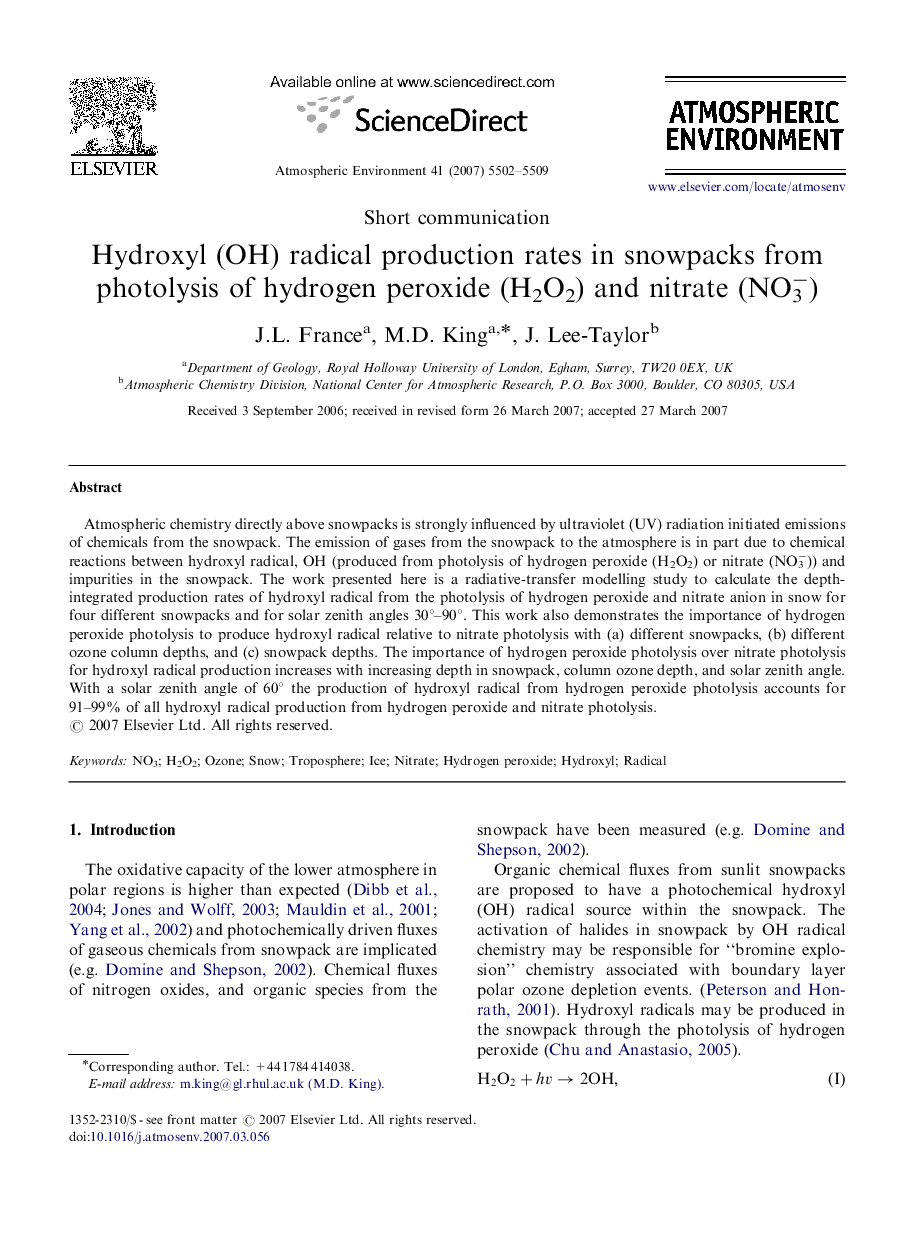| Article ID | Journal | Published Year | Pages | File Type |
|---|---|---|---|---|
| 4443455 | Atmospheric Environment | 2007 | 8 Pages |
Atmospheric chemistry directly above snowpacks is strongly influenced by ultraviolet (UV) radiation initiated emissions of chemicals from the snowpack. The emission of gases from the snowpack to the atmosphere is in part due to chemical reactions between hydroxyl radical, OH (produced from photolysis of hydrogen peroxide (H2O2) or nitrate (NO3−)) and impurities in the snowpack. The work presented here is a radiative-transfer modelling study to calculate the depth-integrated production rates of hydroxyl radical from the photolysis of hydrogen peroxide and nitrate anion in snow for four different snowpacks and for solar zenith angles 30°–90°. This work also demonstrates the importance of hydrogen peroxide photolysis to produce hydroxyl radical relative to nitrate photolysis with (a) different snowpacks, (b) different ozone column depths, and (c) snowpack depths. The importance of hydrogen peroxide photolysis over nitrate photolysis for hydroxyl radical production increases with increasing depth in snowpack, column ozone depth, and solar zenith angle. With a solar zenith angle of 60° the production of hydroxyl radical from hydrogen peroxide photolysis accounts for 91–99% of all hydroxyl radical production from hydrogen peroxide and nitrate photolysis.
